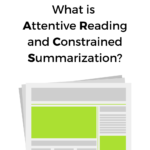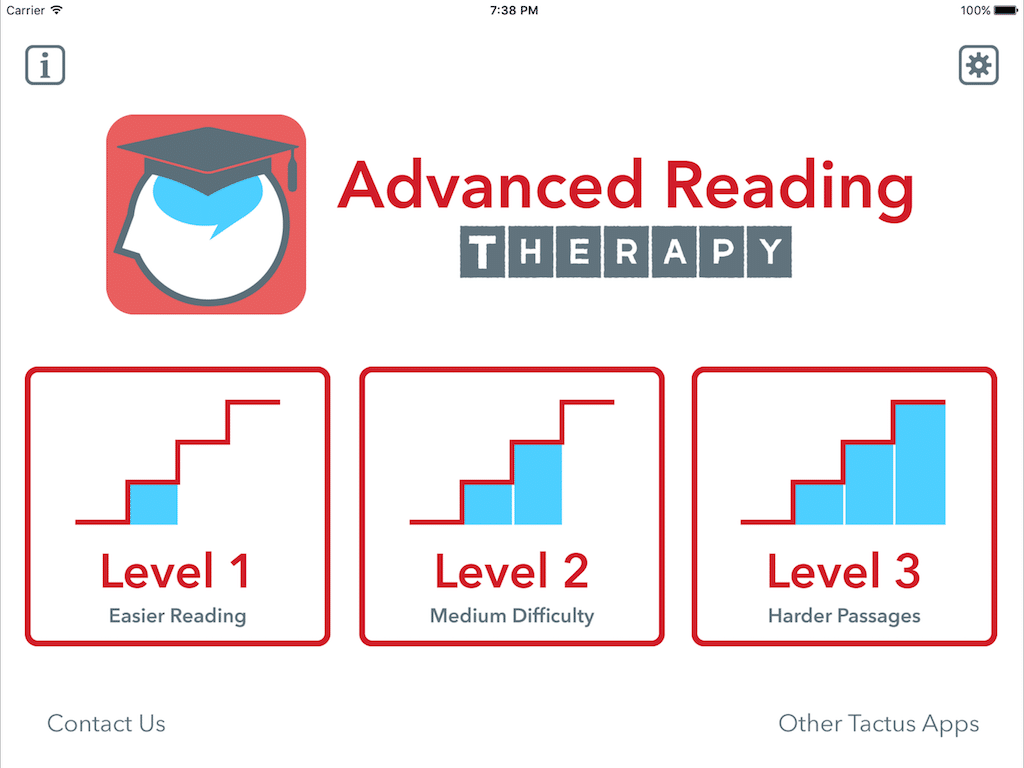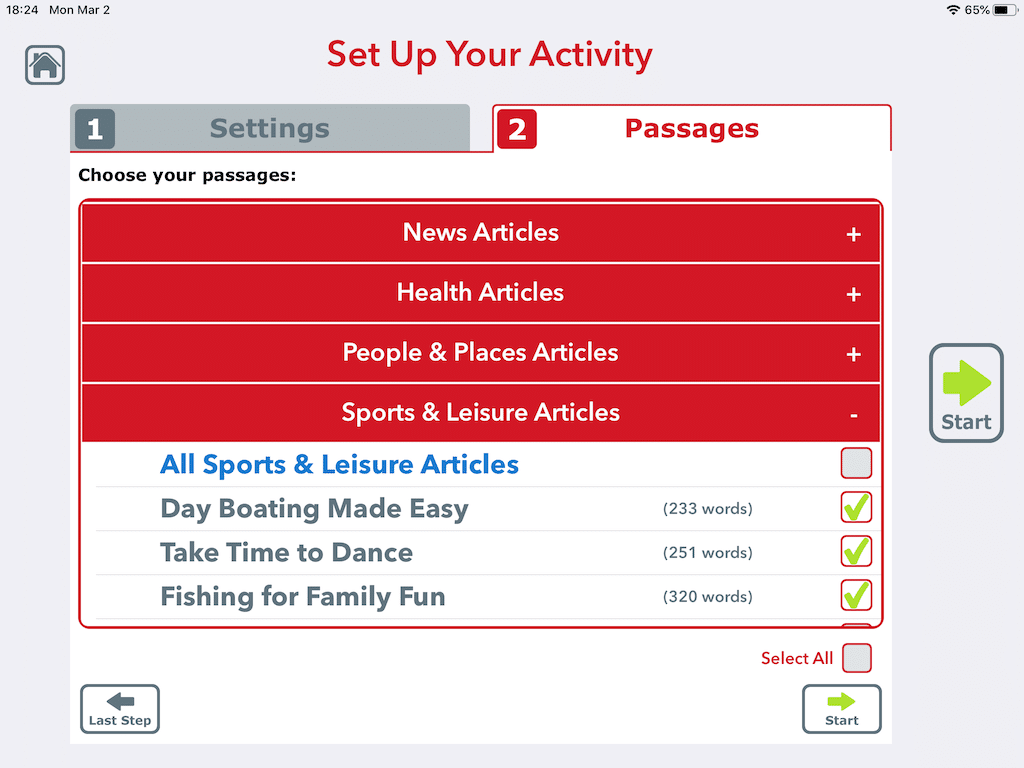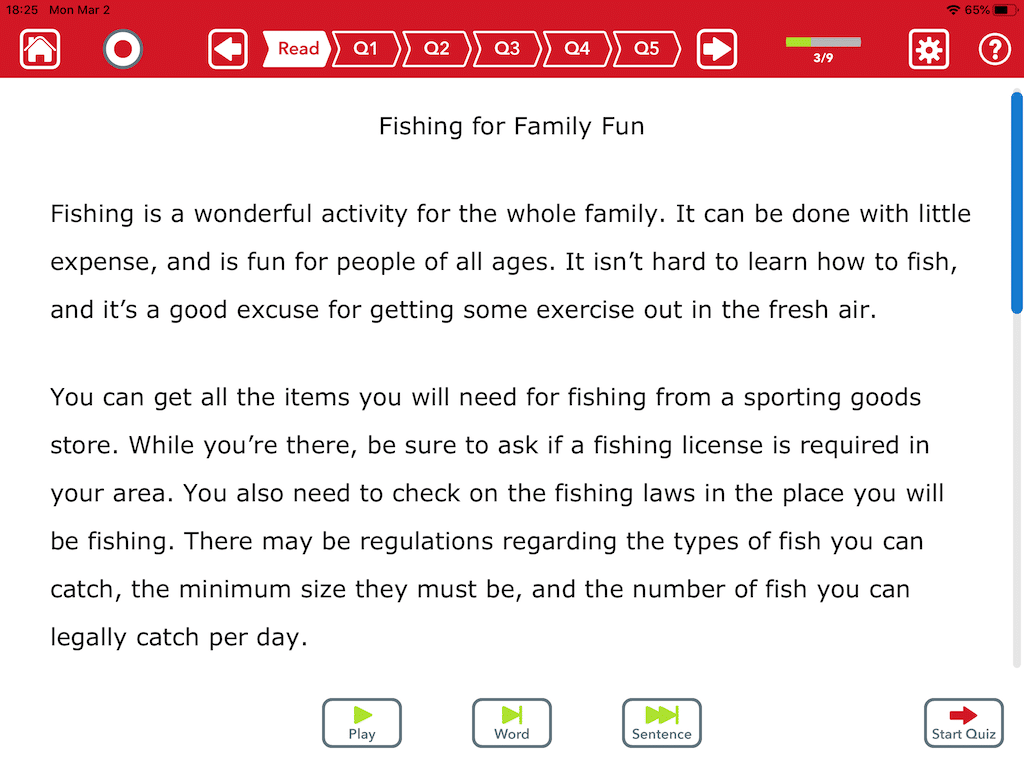How To:
Attentive Reading & Constrained Summarization (ARCS)
for Discourse in Aphasia
7 min read
Speech therapy for aphasia offers several evidence-based treatments for saying words and putting together sentences, but what about when our clients have difficulty with discourse? When your client has progressed beyond saying words and understanding sentences, it’s time to explore a higher-level treatment that focuses on helping individuals with aphasia get back to conversing easier, with variations that can even improve memory and writing!

The Treatment: Attentive Reading and Constrained Summarization (ARCS)
Attentive Reading and Constrained Summarization (ARCS) is a cognitive-linguistic treatment that focuses on reading and verbally summarizing text to improve discourse, using the cognitive skills of attention and intentional language. ARCS has been shown to improve informativeness, efficiency, and topic maintenance in conversation.
What You’ll Need to Do ARCS
ARCS is a relatively easy treatment that requires minimal preparation. The clinician will need:
- some written articles that are of interest to the client, and
- written instructions for summarizing the article’s content.
The study authors recommend starting with short paragraphs written at a 6th-grade level, then adjusting up or down based on the client’s abilities.
Download a “How To” guide now!
Get your free 3-page PDF handout of How To Do Attentive Reading and Constrained Summarization (ARCS). Includes printable instructions to use in therapy!
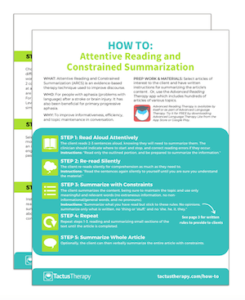
In addition to receiving your free download, you will also be added to our mailing list. You can unsubscribe at any time. Please make sure you read our Privacy Policy and Terms & Conditions.
How To Do ARCS
ARCS-W: A Variation for Writing
Attentive Reading with Constrained Summarization – Written (ARCS-W) is another evidence-based treatment that adapts ARCS to address paragraph-level writing as well as discourse. The client must now write their verbal summary of each segment and the article as a whole, while under the same constraints on content. The writing can be done by hand or by typing – the important part is that writing allows for more explicit self-monitoring and can be carried over into written discourse needs such as email, text messages, and social media.
The steps for ARCS-W are as follows:
- The clinician reads the entire article aloud.
- The client reads a segment of 1-3 sentences twice to themselves, for comprehension.
- The client and clinician separately identify keywords in the segment and write them down.
- The client and clinician compare keywords, discuss which ones are most important, and finalize the list of keywords.
- The client either a) uses their keywords to plan a verbal summary and then produce it without their keywords following the constraints, OR b) uses their keywords to assist in producing their verbal summary with constraints. The clinician provides feedback regarding whether constraints were followed and if all the important information was included.
- The client summarizes the segment in writing and then reads it (aloud or silently) to check for errors. The clinician reads the summary to provide feedback regarding constraints and important information.
- Repeat steps 2-6 until the entire article is summarized in segments.
- The client reads (aloud or silently) or listens to the entire article again.
- The client verbally summarizes the entire article. The clinician provides feedback as appropriate.
- The client writes a summary of the entire article. The clinician provides feedback as appropriate.
- The client rates the completeness of their written summary on a scale of 1-5 (e.g., 1 = not complete at all, 3 = somewhat complete, and 5 = very complete).
RASR: A Variation for Memory
Read Attentively, Summarize, Review (RASR) is a memory training technique based on ARCS that aims to aid the retrieval of information read in a passage. It requires clients to read an unfamiliar passage with the intent of recalling the information. RASR may work because it encourages clients to use their own words, which can be easier to recall, while also breaking up long articles into smaller, paragraph-sized chunks to remember them in more detail.
To do RASR, the client:
- reads the entire passage once aloud at their own pace,
- knowing they will need to summarize, reads the first paragraph aloud at their own pace,
- summarizes the first paragraph using their own words,
- re-reads the first paragraph to check they have summarized all of the information correctly,
- repeats steps 2-4 until all of the paragraphs have been read and summarized,
- summarizes the entire article.
ARCS Using the Advanced Reading Therapy App
Tactus Therapy’s Advanced Reading Therapy app is perfect to pair with ARCS or its variations (ARCS-W and RASR) for therapy in the clinic or home practice with a trained partner. Use any of the 3 difficulty levels to fit with your client’s abilities.
Bonus features of using the Advanced Reading Therapy app:
- On-screen audio recording to easily record the final summary
- Audio support for the pronunciation of words while reading
- Customizable formatting for text size and spacing
- Multiple-choice quiz questions at the end of each passage for further assessment of comprehension
- Try it for free: Download the Advanced Language Therapy Lite app to get 5 full passages in each level. That’s 15 articles to get you started with ARCS right away!
Published Research on ARCS and its Variations
ARCS and its variations have shown positive results in a series of studies on specific populations. While the number of participants in the studies is small, it’s a good indication that the theory behind ARCS is sound and the procedure is likely to be effective on a wide range of people with neurogenic cognitive and language disorders.
ARCS has been researched on two clients with moderate Wernicke’s aphasia (5) and one with primary progressive aphasia (4). All participants showed an increase in informativeness in untrained discourse.
ARCS-W was studied on five clients with mild aphasia (1,2) who showed improvements in noun and verb retrieval, sentences, and discourse in both spoken and written modalities.
RASR research was conducted on healthy older adults (3), which resulted in an increased ability to recall unfamiliar text details using summarization and retrieval methods. The researchers recommend further research into clinical populations, though hypothesize that summarization and retrieval can be beneficial for memory.
References:
- Obermeyer, J. A., & Edmonds, L. A. (2018). Attentive Reading With Constrained Summarization Adapted to Address Written Discourse in People With Mild Aphasia. American Journal of Speech-Language Pathology, 27(1S), 392.
- Obermeyer, J. A., Rogalski, Y., & Edmonds, L. A. (2019). Attentive Reading with Constrained Summarization-Written, a multi-modality discourse-level treatment for mild aphasia. Aphasiology, 1-26.
- Rogalski, Y., Altmann, L., & Rosenbek, J. (2014). Retrieval practice and testing improve memory in older adults. Aphasiology, 28:4, 381-400.
- Rogalski, Y. & Edmonds, L. (2008). Attentive Reading and Constrained Summarisation (ARCS) treatment in primary progressive aphasia: A case study. Aphasiology. 22. 763-775.
- Rogalski, Y., Edmonds, L., Daly, V., & Gardner, M. (2013). Attentive Reading and Constrained Summarisation (ARCS) discourse treatment for chronic Wernicke’s aphasia. Aphasiology, 27:10, 1232-125.
A special “thank you” to Drs. Rogalski and Obermeyer for reviewing this article for accuracy.
